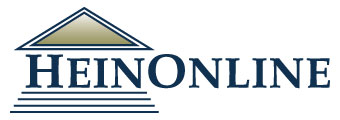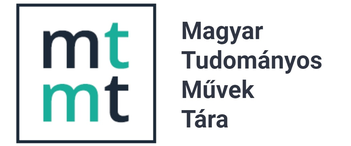Die Rechtslage des Grundbesitzes im Spiegel der Lehre von der Heiligen Krone
Abstract
In relation to the Doctrine of the Holy Crown there are two opposing views. In one of the opinions the state power and the lands belonged to the Holy Crown, and for this reason the decisions about the lands had to be made by the ruler and the orders together. In the other opinion the state power and the lands belonged to the ruler, and for this reason the relation between the king and the person who was donated with a land was a private legal connection. Although the mineral resources originally belonged to the Holy Crown, in the course of time the Habsburg rulers achieved that they could dispose alone, without the consent of the orders, over the mine revenues. In this way, by the 18th century, the relation between the king and the mining contractors became a private legal connection. Comparing the rules of the Bergregal and the rules related to the lands we can conclude that the lands belonged to the Holy Crown, and not to the ruler.
References
2. Bartoniek E (1987) A magyar királykoronázások története, Magyar Történelmi Társulat, Budapest.
3. Bódi S (2015) A Szent Korona-eszme különbségei Echart Ferenc, Timon Ákos és Bartoniek Emma felfogásában, Polgári Szemle, 11(1–3), pp. 327–341.
4. Bónis Gy (2003) Hűbériség és rendiség a középkori magyar jogban, Osiris, Budapest.
5. Delius C T (1806) Anleitung zu der Bergbaukunst nach ihrer Theorie und Ausübung, Bd. 2, Hof- und Staats-Druckerey, Wien.
6. Delius Kristóf Traugott (1972) Értekezés a bányászati kamerális tudomány alapelveiről (ford. Bóday Gábor), in: Bevezetés a bányatan elméletébe és gyakorlásába valamint a bányakincstári tudományok alaptételeinek ismertetésébe, OMBKE, Bányászati Szakosztály, Budapest, pp. 445–479.
7. Érszegi G (Hrsg.) (1987) Árpád kori legendák és intelmek, Szépirodalmi Könyvkiadó, Budapest.
8. Grenzenstein G (Hrsg.) (1855) Das allgemeine österreichische Berggesetz vom 23. Mai 1854, und die Verordnungen über die Bergwerksabgaben vom 4. October 1854, Friedrich Manz, Wien.
9. Echart F (1931) Jog- és alkotmánytörténet, in: Hóman Bálint (Hrsg.) A magyar történetírás új útjai, Magyar Szemle Társaság, Budapest, pp. 269–323.
10. Echart F (1941) A Szentkorona-eszme története, MTA, Budapest.
11. Erklärendes Wörterbuch (1869) Erklärendes Wörterbuch der im Bergbau, in der Hüttenkunde und in Salinenwerken vorkommenden technischen Kunstausdrücke und Fremdwörter, Falkenberg, Burgsteinfurt, 1869.
12. Schmidt F A (1832–1839) Chronologisch Systematische Sammlung der Berggesetze der Österreichischen Monarchie. II. Abteilung: Chronologisch Systematische Sammlung der Berggesetze der Königreiche: Ungarn, Kroatien, Dalmatien, Slavonien und des Grossfürstenthums Siebenbürgen, Band I–XXV, J. P. Sollinger, Wien.
13. Fuchs P (Übers.) (2009) Das Rechtsbuch von Schemnitz – Selmecbánya város középkori jogkönyve, Montan-Press, Budapest.
14. Gáva K, Smuk P & Téglási A (2017) Az Alaptörvény értékei, Dialog Campus Kiadó, Budapest.
15. Hajnik I (1867) Magyarország az Árpád-királyoktól az ősiségnek megállapításáig és a hűbéri Európa, Heckenast Gusztáv, Pest.
16. Lück H (2005) Bergrecht, Bergregal, in: Cordes A, Haferkamp H-P, Lück H, Werkmüller D, Schmidt-Wiegand R (Hrsg.), Handwörterbuch zur deutschen Rechtsgeschichte, Band I. Erich Schmidt Verlag, Berlin, pp., 527–533.
17. Lück H (2015) Die Entwicklung des deutschen Bergrechts und der Bergbaudirektion bis zum Allgemeinen (preußischen) Berggesetz 1865,
in: Wolfhard W (Hrsg.) Geschichte des deutschen Bergbaus, Bd. 2. Salze, Erden und Kohlen. Der Aufbruch in die Moderne im 18. und frühen 19. Jahrhundert. Münster, Aschendorff, 2015, pp., 111–216.
18. Homoki Nagy M (2005) A magyar magánjog történetének vázlata 1848-ig, JATE Press, Szeged.
19. Izsó (2004) The introduction and influence of the Austrian Common Mining Law in Hungary, in: The 150th anniversary of issue of the Common Mining Law (Konference, Hradec nad Moravici, Czech Republic, 9. 2004.) Montanex, Ostrava, pp. 15–17.
20. Kardos J (1992) A Szent Korona és a Szent Korona-eszme története, IKVA, Budapest.
21. Márkus D (Hrsg.) (1896–1901) Corpus Juris Hungarici, I–VIII, Franklin, Budapest.
22. Maximilian II. (1805) Neue Berg-Ordnung des Königreichs Ungarn, und solcher Cron einverleibten Gold, Silber, Kupfer, und anderer Metall- Bergwerken, Sammt denen Erläuterungen zweyer Alten Berg-Ordnungen Der sieben königl. Freyen Berg-Städte 1. Chemnitz u. Königsberg 2. Schemnitz, Neusohl, Bugganz, Dülln und Libeten, Aus der k. auch k. k. Hof- und Staats Druckerey, Wien.
23. Timon Á (1904) Ungarische Verfassungs- und Rechtsgeschichte mit Bezug auf die Rechtsentwicklung der westlichen Staaten, Puttkammer und Mühlbrecht, Berlin.
24. Timon Á (1907) A Szent Korona és a koronázás közjogi jelentősége, Rákosi Jenő Budapesti Hírlap Újságvállalata, Budapest.
25. Timon Á (1920) A Szent-Korona elmélete és a koronázás, Stephaneum Nyomda Rt, Budapest.
26. Tomcsányi M (1940) Magyarország közjoga, Királyi Magyar Egyetemi Nyomda, Budapest.
27. Törő L D (2016) Az „Echart-vita“, Echart Ferenc 1931-es programtanulmányának kortárs visszhangja, Aetas 31(4), pp., 57–77.
28. Tóth Z J (2008) Magyar közjogi hagyományok és nemzeti öntudat a 19. század végétől napjainkig, Adalékok a Szent Korona-eszme történetéhez,, Szent István Társulat, Budapest.
29. Váczy P (1932) A hűbériség szerepe Szent István királyságában, Századok,
66(1–3), pp., 369–392.
30. Wenzel G (1866) A magyar és erdélyi bányajog rendszere, Kir. Magyar Egyetemi Nyomda, Buda.
31. Zétényi Zs (1997) A Szentkorona-eszme mai értelme, Püski Kiadó, Budapest.
32. Zlinszky J (2013) A Szentkorona-eszme és története, in: Koltay András (Hrsg.): A XII táblától a 12 ponton át a magánjog új törvénykönyvéig, Szent István Kiadó, Budapest, pp., 227–245.












